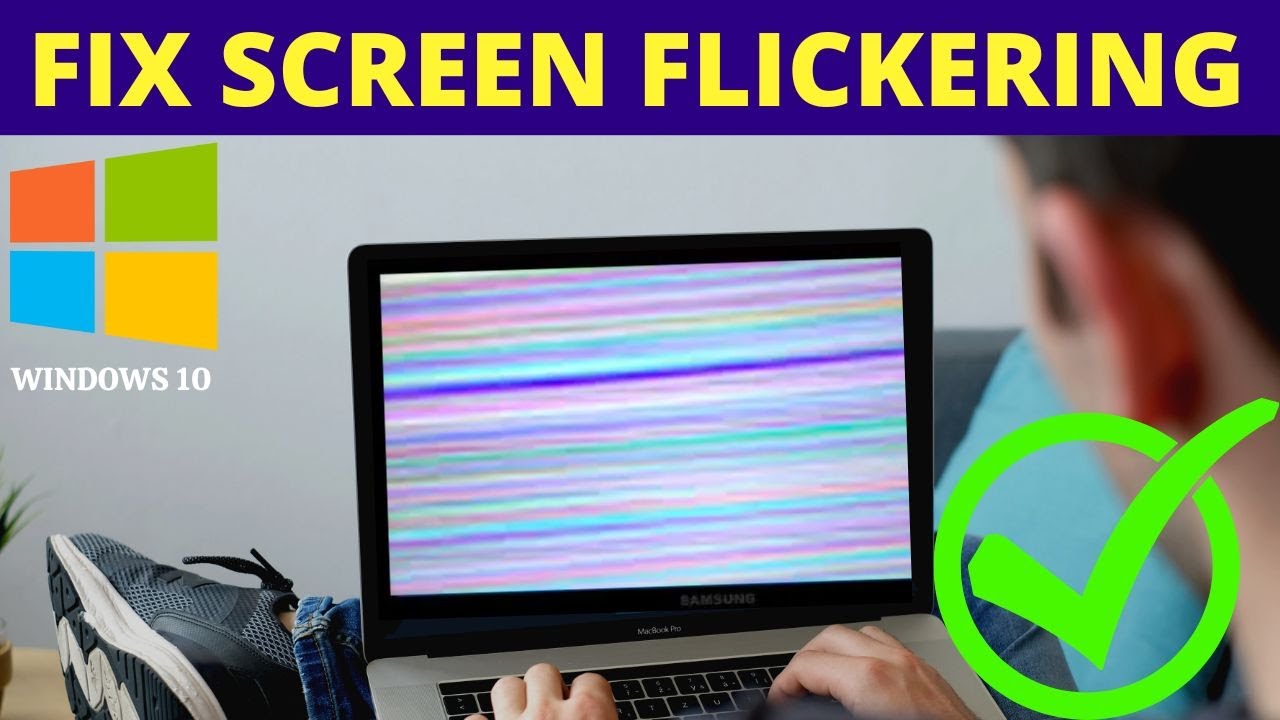Unraveling the Mystery of Screen Flickering in Laptops: A Comprehensive Guide

The laptop screen flickering issue is a common annoyance that can disrupt productivity, strain the eyes, and cause frustration for users. This phenomenon manifests as rapid and repetitive changes in brightness or color on the laptop display, often leading to discomfort and difficulty in viewing content. While screen flickering can stem from various causes, ranging from software glitches to hardware defects, understanding the underlying factors and implementing appropriate solutions is crucial for resolving this issue effectively. In this extensive guide, we will explore the causes of screen flickering in laptops, diagnostic techniques for identifying the root cause, and practical solutions to alleviate this problem.
Understanding Screen Flickering:
Screen flickering in laptops can manifest in several forms, including:
- Rapid changes in brightness or color intensity.
- Horizontal or vertical lines appearing on the screen.
- Intermittent blackouts or blank screens.
These symptoms can occur sporadically or persistently, depending on the underlying cause. While screen flickering may be a minor inconvenience for some users, it can significantly impair productivity and cause discomfort for others, particularly those prone to eye strain or headaches.
Common Causes of Screen Flickering:
Screen flickering in laptops can be attributed to various factors, including:
- Driver Issues: Outdated or incompatible graphics drivers can lead to screen flickering as the laptop struggles to render graphics properly.
- Hardware Malfunctions: Faulty components such as the graphics card, display panel, or internal connectors may cause screen flickering due to loose connections or hardware defects.
- Software Glitches: Incompatible or corrupt software, including operating system updates, graphics card drivers, or third-party applications, can trigger screen flickering issues.
- Electromagnetic Interference: External factors such as electromagnetic interference from nearby electronic devices or faulty power adapters may disrupt the laptop’s display signals, leading to screen flickering.
- Overheating: Excessive heat buildup within the laptop’s components, particularly the graphics card or display panel, can cause screen flickering as the hardware struggles to maintain stable performance.
Diagnosing Screen Flickering:
To identify the root cause of screen flickering in a laptop, users can perform the following diagnostic steps:
- Update Graphics Drivers: Check for and install the latest updates for the laptop’s graphics drivers from the manufacturer’s website or through the Device Manager in the Windows operating system.
- Run Hardware Diagnostics: Utilize built-in diagnostic tools provided by the laptop manufacturer to test the functionality of the display panel, graphics card, and internal connectors for any hardware defects.
- Boot into Safe Mode: Restart the laptop and boot into Safe Mode to determine if the screen flickering persists, which can help identify if the issue is software-related.
- Adjust Display Settings: Experiment with different display settings, such as screen resolution, refresh rate, and color settings, to see if changes alleviate the screen flickering.
- Check for External Interference: Move the laptop to a different location away from potential sources of electromagnetic interference, such as other electronic devices or power adapters.
Practical Solutions to Screen Flickering:
Once the root cause of screen flickering has been identified, users can implement the following solutions to address the issue:
- Update Graphics Drivers: Ensure that the laptop’s graphics drivers are up to date to address compatibility issues and improve graphics performance.
- Adjust Power Settings: Modify the laptop’s power settings to prioritize performance over power savings, which can help alleviate screen flickering caused by overheating or inadequate power supply.
- Disable Background Processes: Close unnecessary background processes and applications that may be consuming system resources and causing screen flickering.
- Check for Loose Connections: Inspect the connections between the display panel, graphics card, and internal connectors to ensure they are securely attached and free from dust or debris.
- Repair or Replace Faulty Hardware: If screen flickering persists despite troubleshooting, consider seeking professional assistance to repair or replace faulty hardware components, such as the graphics card or display panel.
Conclusion:
Screen flickering in laptops can be a frustrating and disruptive issue for users, but with careful diagnosis and troubleshooting, it can often be resolved effectively. By understanding the common causes of screen flickering, performing diagnostic tests to identify the root cause, and implementing practical solutions, users can alleviate this problem and restore their laptops to optimal performance. Whether updating graphics drivers, adjusting display settings, or repairing faulty hardware, proactive measures can help mitigate screen flickering and ensure a smoother and more enjoyable computing experience.







